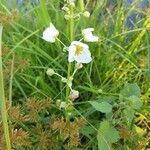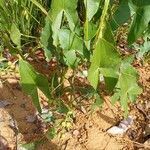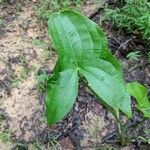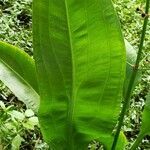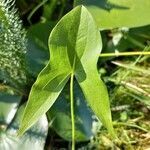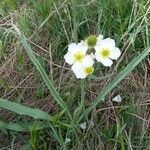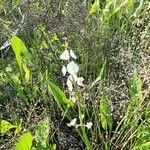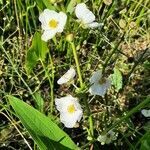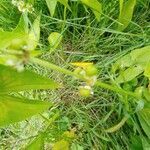Herbs, perennial, to 45 cm; rhizomes absent; stolons present; corms present. Leaves emersed; petiole triangular, erect to ascending, 6.5--51 cm; blade sagittate, rarely hastate, 1.5--30.5 ´ 2--17 cm, basal lobes equal to or less than remainder of blade. Inflorescences racemes, rarely panicles, of 3--9 whorls, emersed, 4.5--28.5 ´ 4--23 cm; peduncles 10--59 cm; bracts connate more than or equal to ¼ total length, elliptic to lanceolate, 3--8 mm, delicate, not papillose; fruiting pedicels spreading, cylindric, 0.5--3.5 cm. Flowers to 4 cm diam.; sepals recurved to spreading, not enclosing flower or fruiting head; filaments cylindric, longer than anthers, glabrous; pistillate pedicellate, without ring of sterile stamens. Fruiting heads 1--1.7 cm diam; achenes oblanceoloid, without abaxial keel, 2.5--3.5 ´ to 2 mm, beaked; faces not tuberculate, wings absent, glands (0--)1(--2); beak lateral, horizontal, 1--2 mm. 2n = 22.
A herb which grows in water and keeps growing from year to year. It grows 1-2 m tall. The leaves are sword shaped and the leaf stalks and leaf blade stick upright. The leaf stalk and blade are 60-100 cm long. The leaves under water are narrow. The flowers are of one sex. There are 3 petals and they are white. They are on a branched flowering stalk. This can be 2 m long.
